History of the Rolex Submariner – Part 3, The 5-Digit References
Bridging the gap between the vintage Submariners and the modern-day collection, some say the 5-digit references offer the best of both worlds.
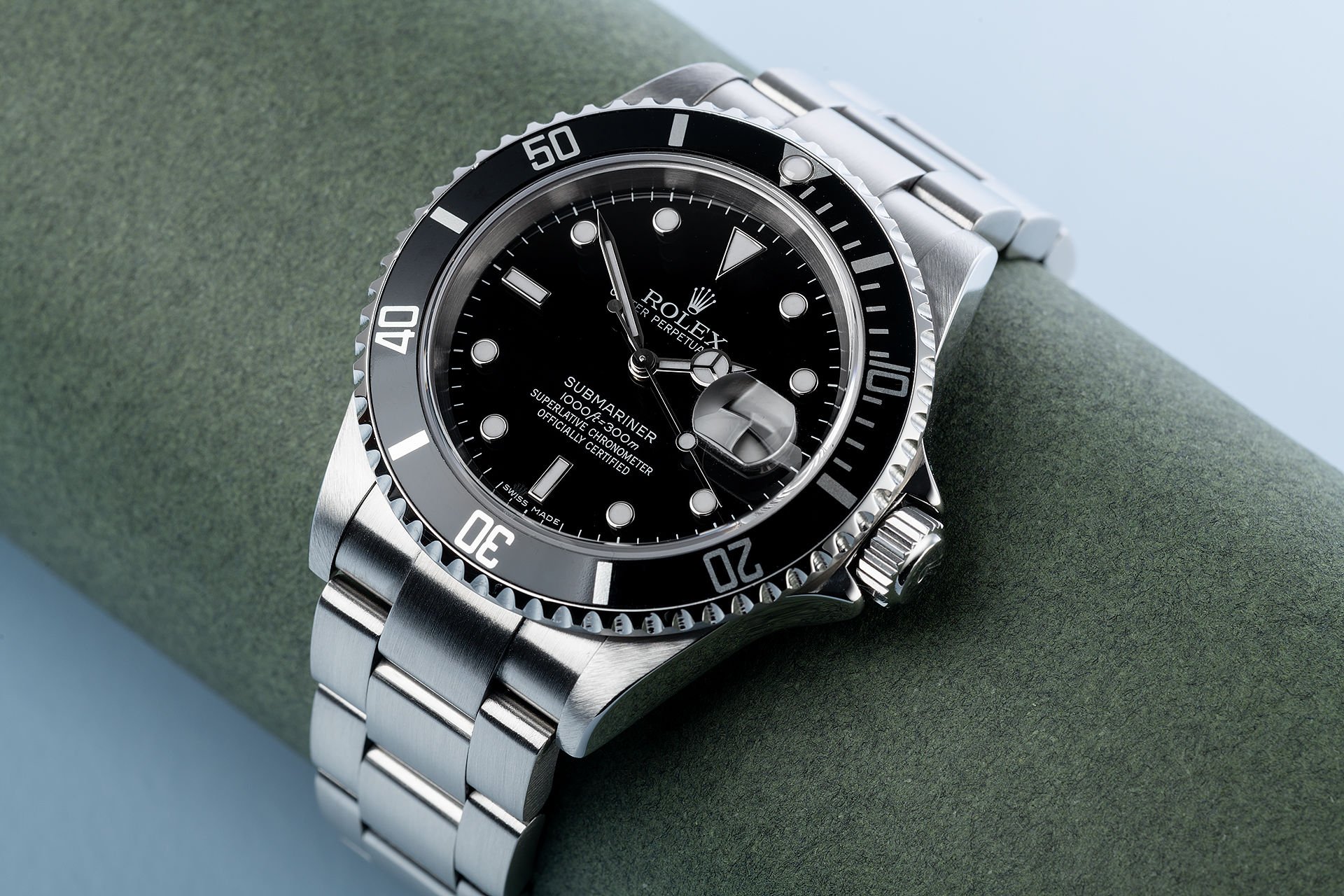
We have reached the third instalment in our special four-part series on the Rolex Submariner history. If you have read Part 1 (the early references) and Part 2 (the 55XX generation and the date 1680) already, you should be pretty well versed in the early origins and surprisingly rapid evolution of the Submariner. Now we’re turning our attention to the third generation, picking up the trail at the end of the 1970s, just as Rolex introduces its first 5-digit Submariner reference. Interestingly, Rolex would also continue to produce the 5XXX reference (specifically the Ref. 5513) in parallel for another decade or so. But we’ll get to that in due course.
If you recall in Part 2, it took Rolex around 16 years to decide that putting a date window on the Rolex Submariner was a good idea. Making its debut in 1969, Ref. 1680 kicked off the transition of the Submariner from hardcore tool watch targeted at a niche audience to a more luxurious yet still practical, wear “everywhere/everyday” model with broad appeal. Such was the popularity of the new Submariner Date in fact, that Rolex largely put production of the original non-date version on autopilot to focus its efforts on developing the newer model further.
Ref. 16800 – Rolex Submariner Date 1979 – 1988
A decade after unveiling the Submariner Date, Rolex followed up with the first of the 5-digit references – the Ref. 16800. This model – and the Ref. 16808 and Ref. 16803 discussed shortly – are considered “transitional” references. This means that initially they maintained some of the existing traits of their predecessors (in this case the Ref. 1680 and Ref. 1680/8) whilst introducing some notable upgrades.
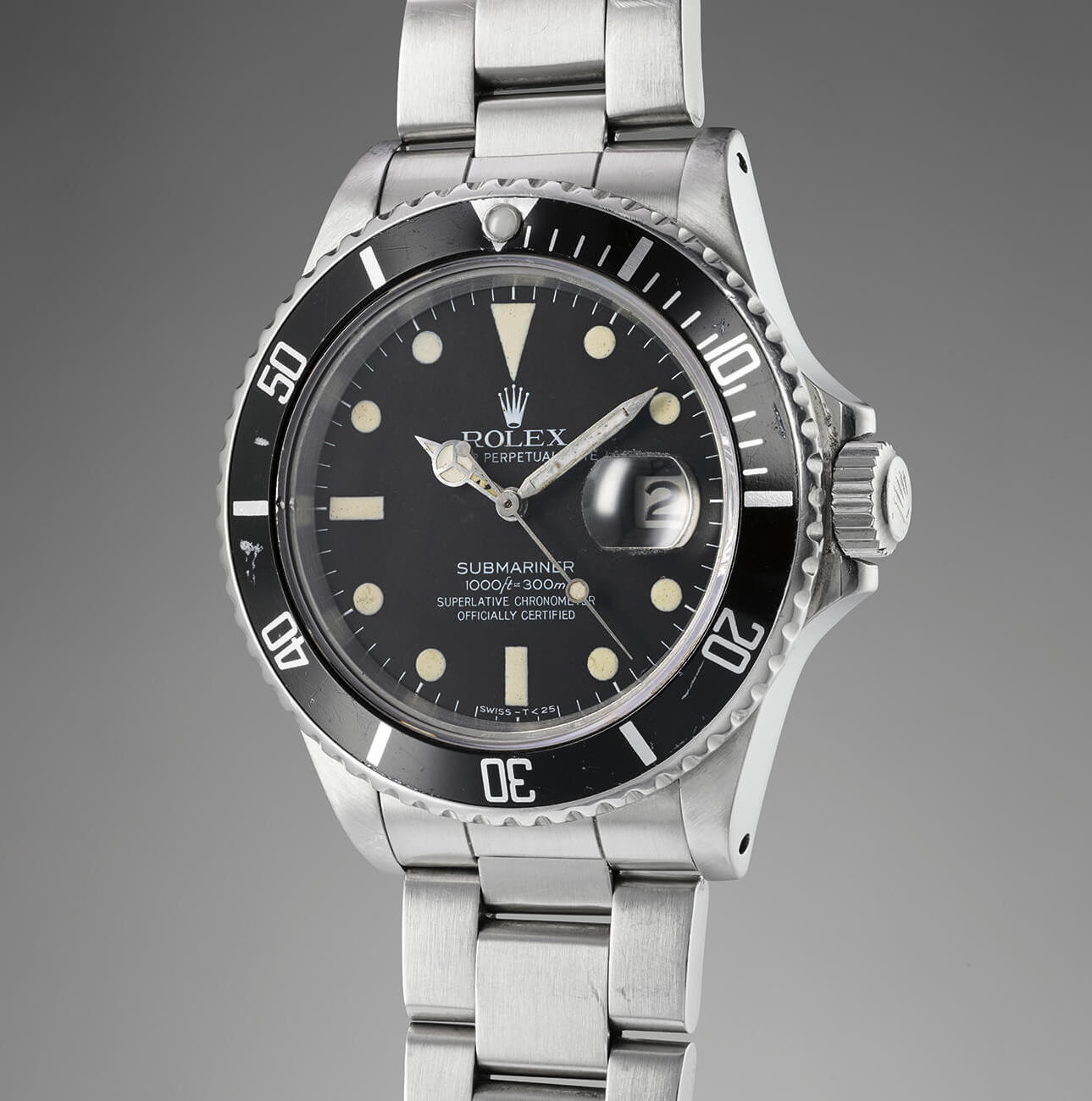
These upgrades began with the Submariner Date series and would later carry over to the non-Date version as well. Firstly, the plexiglass crystal was replaced with a more robust sapphire one. Something we take for granted today, but at the time, the introduction of a modern sapphire crystal was big news. Still with a cyclops to magnify the date of course. Rolex had done some work on the internals of the case design too, making it more robust without altering the dimensions. The crown was also upgraded to Rolex’s patented Triplock version, which had made its debut several years earlier on the Sea-Dweller. This system uses three O-ring gaskets to create three separately sealed zones, ensuring the watch remains as watertight as possible. As a result, the water-resistance rating increased to 300m (1,000ft), which is what it remains today.
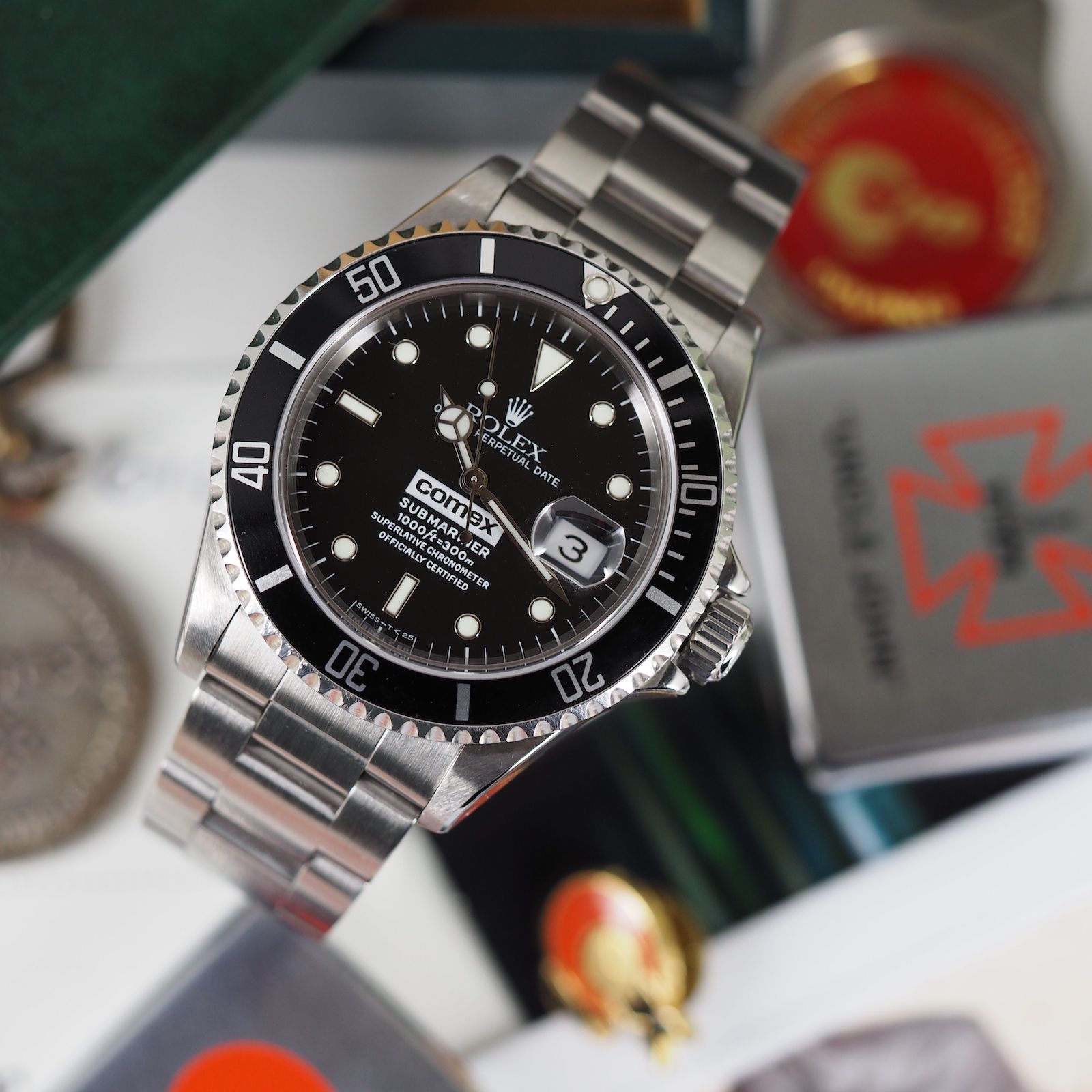
Two years later, Rolex made the rare move of introducing a revised version of an existing model. In addition to the sapphire crystal and increased depth-rating, this upgraded version of the Ref. 16800 incorporated a ratcheted, unidirectional rotating bezel for the first time on any Submariner model. It’s hard to believe, but all the way up until 1981, the bezels on this famous dive watch could be turned in either direction. Making it unidirectional introduced an added safety feature for those still using the Submariner to actually go diving. In practice, this means that even if the bezel somehow gets bumped or accidentally turned during a dive, the remaining dive time can only get shorter.
This later version of the Ref. 16800 also saw a movement upgrade in the form of the Rolex calibre 3035. In addition to beating at a higher frequency than the previous calibre 1575 (28,800 beats per hour vs 19,800 beats per hour), it also introduced quick-set date function. Certified as a ‘Superlative Chronometer’, this movement features similar architecture to the calibre 3135 found in the current Rolex Submariner Date.
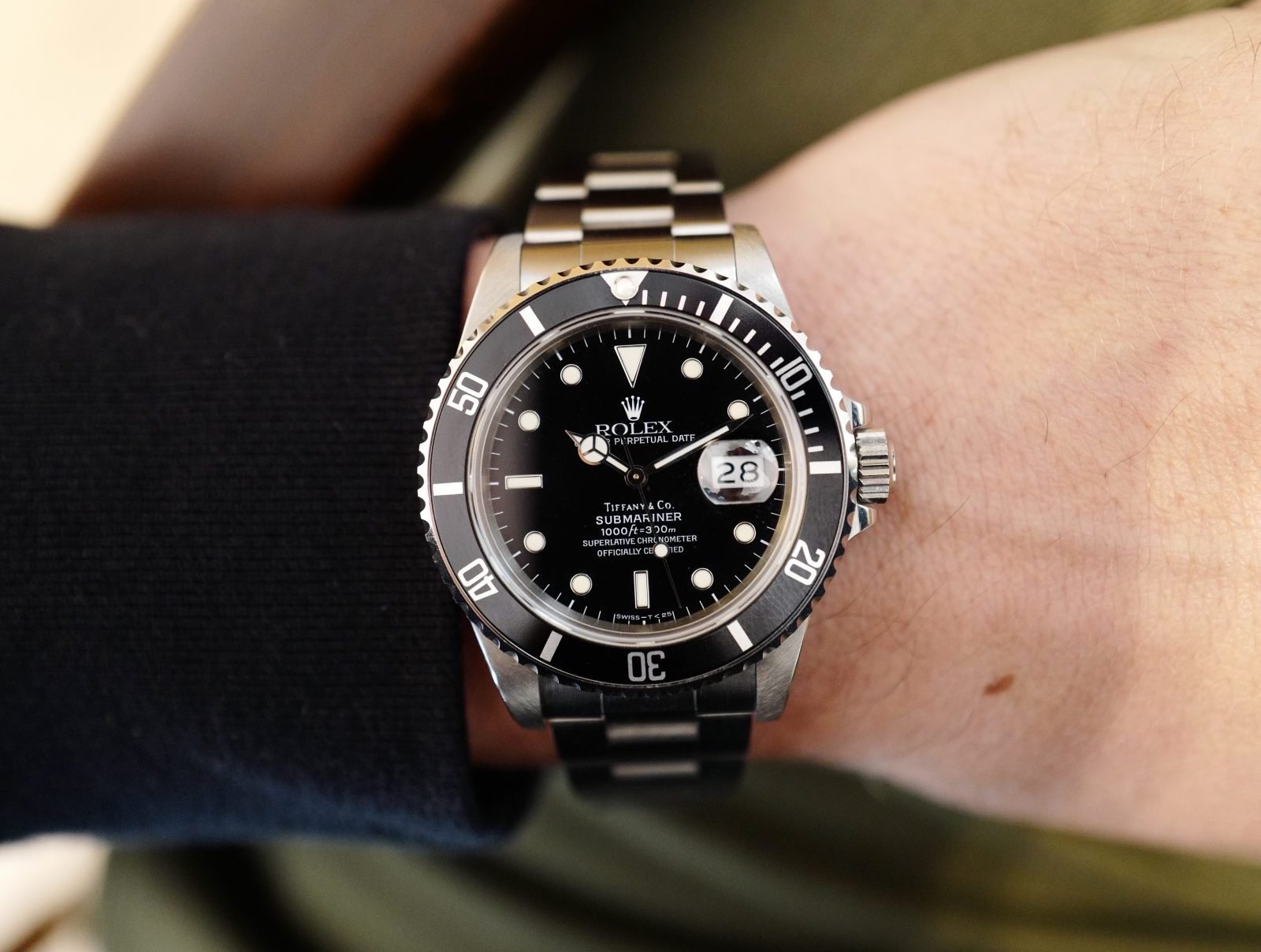
Other changes over the lifetime of this model were more subtle. The dial transitioned from a matte to glossy finish. And while the luminous hour indices started out as painted, they eventually became hand-applied, luminous-filled plots made of white gold. All hallmarks of the modern Rolex Submariner Date we know today.
Ref. 16808 – Circa 1979 – 1987
At the same time as launching the Ref. 16800 in steel, Rolex also debuted the Ref. 16808 in 18k solid yellow gold. This was the logical upgrade to the Ref. 1680/8 and again was available with either a black dial/black bezel or blue dial/blue bezel combination. Initially, the dials featured the same “nipple” style indices as their predecessor, but these were later changed to flatter, lume-filled indices as found on the Ref. 16800. Other than that, the Ref. 16808 is technically the same as the Ref. 16800, and in fact, “16800” is engraved on the inside of its caseback.
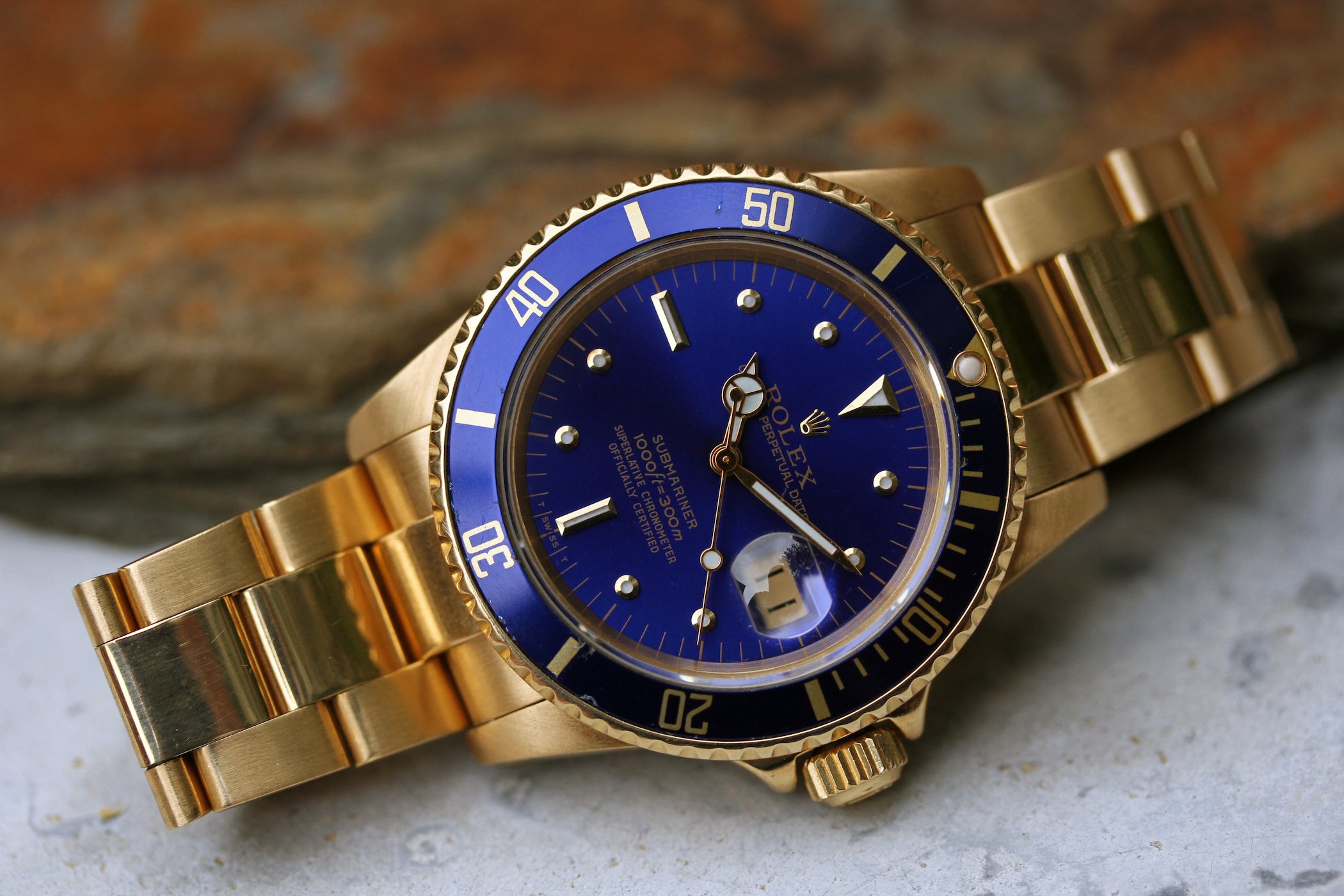
Ref. 16803 – Circa 1984 – 1987
A few years after the Ref. 16800 and Ref. 16808 came to market, Rolex introduced the Ref. 16803. This is the first-ever Submariner available in Rolesor – Rolex lingo for steel and gold. In the case of the Ref. 16803, that meant an 18k yellow gold unidirectional rotating bezel (with either a blue or black insert matching the colour of the dial) and solid yellow gold central links on the Oyster bracelet. Some of the first examples still featured “nipple” dials, but these were soon superseded by the flat lume-filled indices seen on the other references.
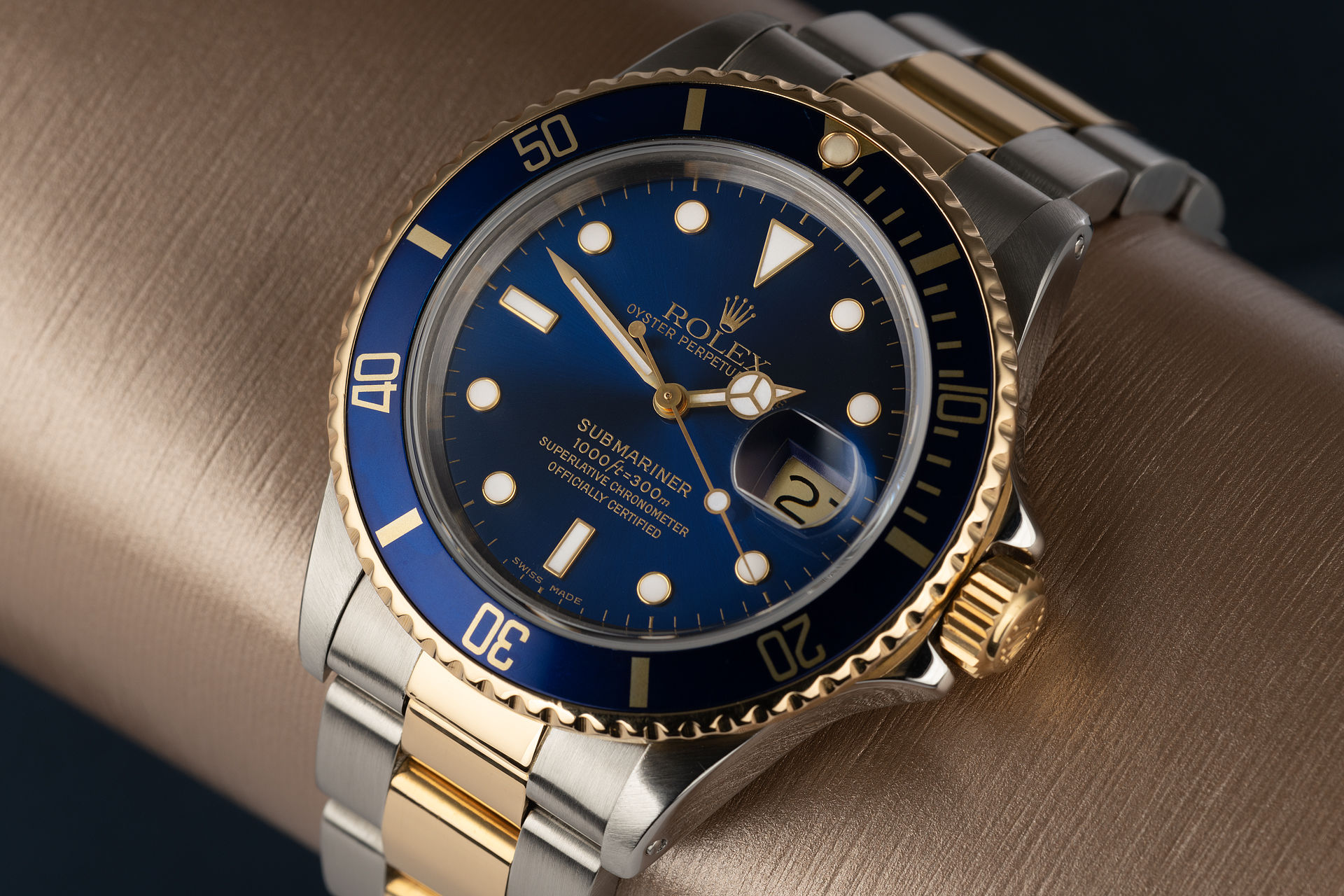
Ref. 16610, 16618, 16613 – 1988 – 2008/2010
In 1988, roughly a decade after the first 5-digit references came to market, Rolex was ready for its next major update of the Submariner Date. This came in the form of the Ref. 16610. This model incorporated all the changes introduced in the transitional Ref. 16800 – glossy dial, applied indices, unidirectional bezel, trip-lock crown, etc. – whilst incorporating an engine upgrade. Perhaps one of the brand’s best-known and longest-serving movements, the Calibre 3135 is still found in the current version of the Submariner Date (for now at least). As you might expect, Rolex also introduced solid gold (Ref. 16618) and yellow Rolesor versions (Ref. 16613) too.
Incredibly, these models would remain in production for the next two decades. Of course, Rolex continued to tweak and refine them over time. As the technology evolved, Luminova became the luminescent material of choice for Rolex dials, usurping tritium in the late 1990s. Another notable change was the introduction of Oyster bracelets with solid end links – previous Submariner models feature hollow end links, which made the bracelets lighter but also gave the impression they weren’t as robust as might be desired. Rolex also began producing cases without visible lug holes. Again, this is something we take for granted these days, but if you look closely at older references of the Rolex Submariner you will notice drilled lug holes on the side of the case.
But while the Ref. 16618 and 16613 remained pretty consistent throughout the years, until they were discontinued and replaced around 2008, Rolex had other plans for the Ref. 16610.
Ref. 16610LV AKA “Kermit” – 2003 – 2010
In 2003, Rolex unofficially marked the 50th anniversary of the birth of the Submariner. (Although some argue the anniversary didn’t actually occur until 2004.) In doing so, it created what has become one of, if not, the most famous of the modern Rolex Submariners – the Ref.16610LV, known to collectors as “Kermit”. Just one look at this watch and you can see where the nickname comes from. Instead of the black bezel insert that had appeared on every Rolex Submariner since the inaugural Ref. 6204, the aluminium insert on the Ref. 16610LV is a distinctive green colour. This was a big deal, as outside of the GMT-Master series, none of the tool watches made by Rolex had ever featured a ‘colourful’ bezel.
Interestingly though, this model wasn’t a limited edition, nor was it formally acknowledged as an anniversary piece by Rolex. Similar to what the brand did with the Sea-Dweller Single Red in 2017. In fact, the Kermit remained in production for seven years and can be seen as something of a predecessor to the “Hulk”. The colour of the bezel wasn’t the only thing that changed though. Rolex also introduced a dial with larger lume plots on the Ref. 16610LV, what is now commonly referred to as the “Maxi Dial”. This is a big drawcard for many Submariner fans, as it’s the only opportunity to have a Maxi Dial without the bulkier “Super” case Rolex would soon introduce on the next variation of the Submariner.
This being Rolex, there were numerous bezel and dial variations throughout the Kermit’s production life. The most famous is the early “FLAT 4” bezel, where the top of the four in “40” is flat instead of meeting at a point. Is it worth paying a premium for? That’s up to you to decide.
Ref. 14060 – 1989/1990 – 2010
Whilst Rolex was focusing its attention on evolving the Submariner Date in the early 1980s, it continued to produce the Ref. 5513 Submariner. By the end of the decade, this model was long overdue an upgrade, which came in the form of the Ref. 14060. Launched around a year after the 16610, it became the first non-date Sub to feature a sapphire crystal and a Triplock crown. As with its sibling, this resulted in an increased water-resistance of 300m.
Interestingly though – perhaps in deference to the popularity of the Submariner Date model – the Ref. 14060 was not a certified chronometer. Inside was the calibre 3000, a robust modern Rolex movement. Admittedly though, it didn’t feature all the bells and whistles of the calibre 3135. For example, it used a flat spring instead of a Breguet overcoil. Even if it was still good enough to be certified by the COSC, Rolex just opted not to put chronometer-certified versions in the Ref. 14060. The upside of this is that the dial is much cleaner, with only two lines of text above 6 o’clock.

Even years later, in 1999, when Rolex replaced the Ref. 14060 with the revised Ref. 14060M (‘M’ standing for modified), the upgraded calibre 3130 inside was not certified as a superlative chronometer. Eventually, Rolex would change its mind about this, but not until the late 2000s. That’s why it’s possible to find examples of the Ref. 14060M with two-line dials and ones with four-line dials.
This concludes our look at the previous generations of the Rolex Submariner. In the fourth and final instalment, we’ll be turning our attention to the modern Rolex Submariners in the current collection.
You can find here the 4 parts of the History of the Rolex Submariner:
- Part 1, The Early References
- Part 2, The 55XX Generation and Date 1680
- Part 3, The 5-digit Series
- Part 4, The Modern Ceramic Models
Photos: FHH, Rolex Passion Market, NIC Watches, The Watch Club, Lunar Oyster, Premium Watch, Alessandro Ciani, Watchfinder


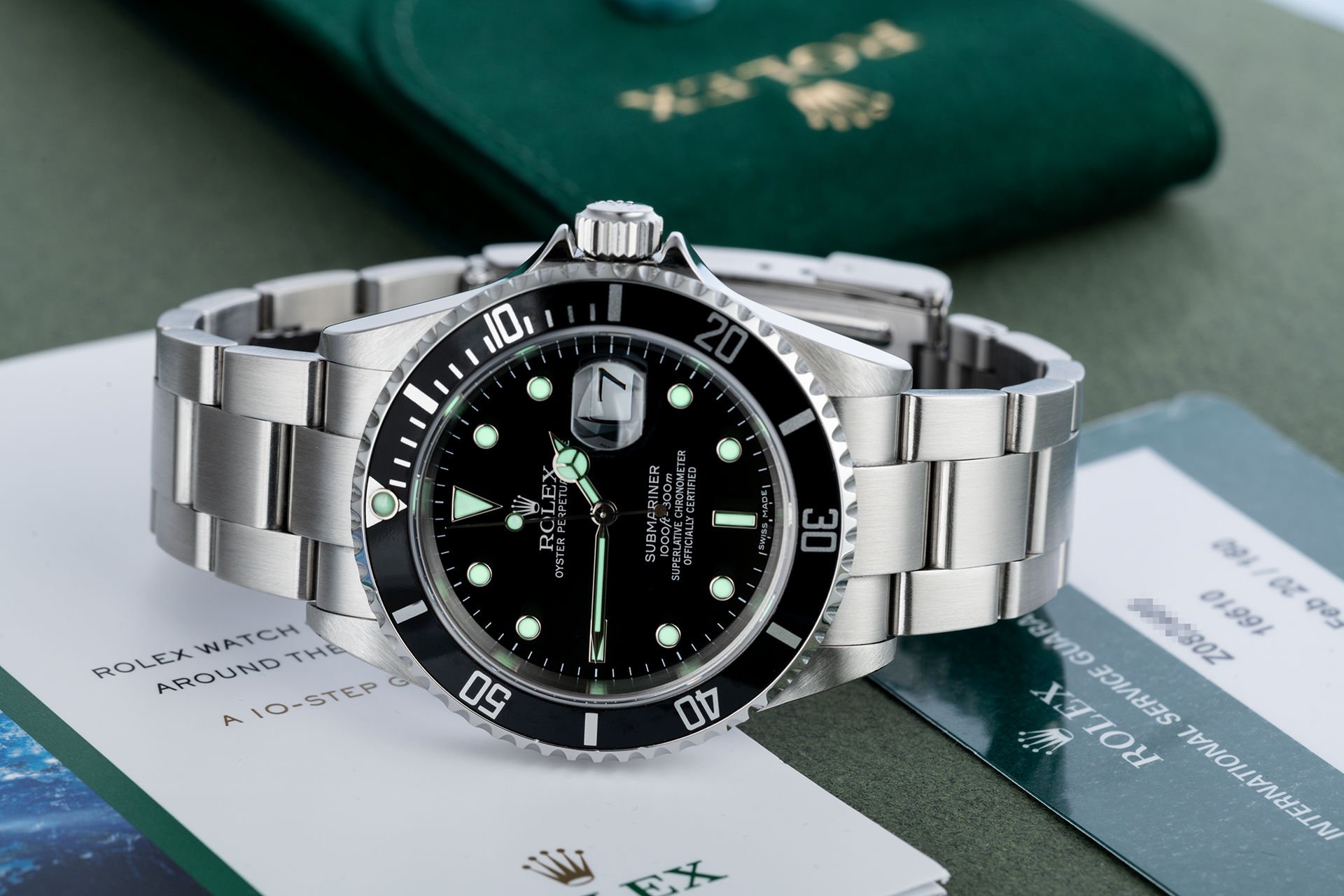
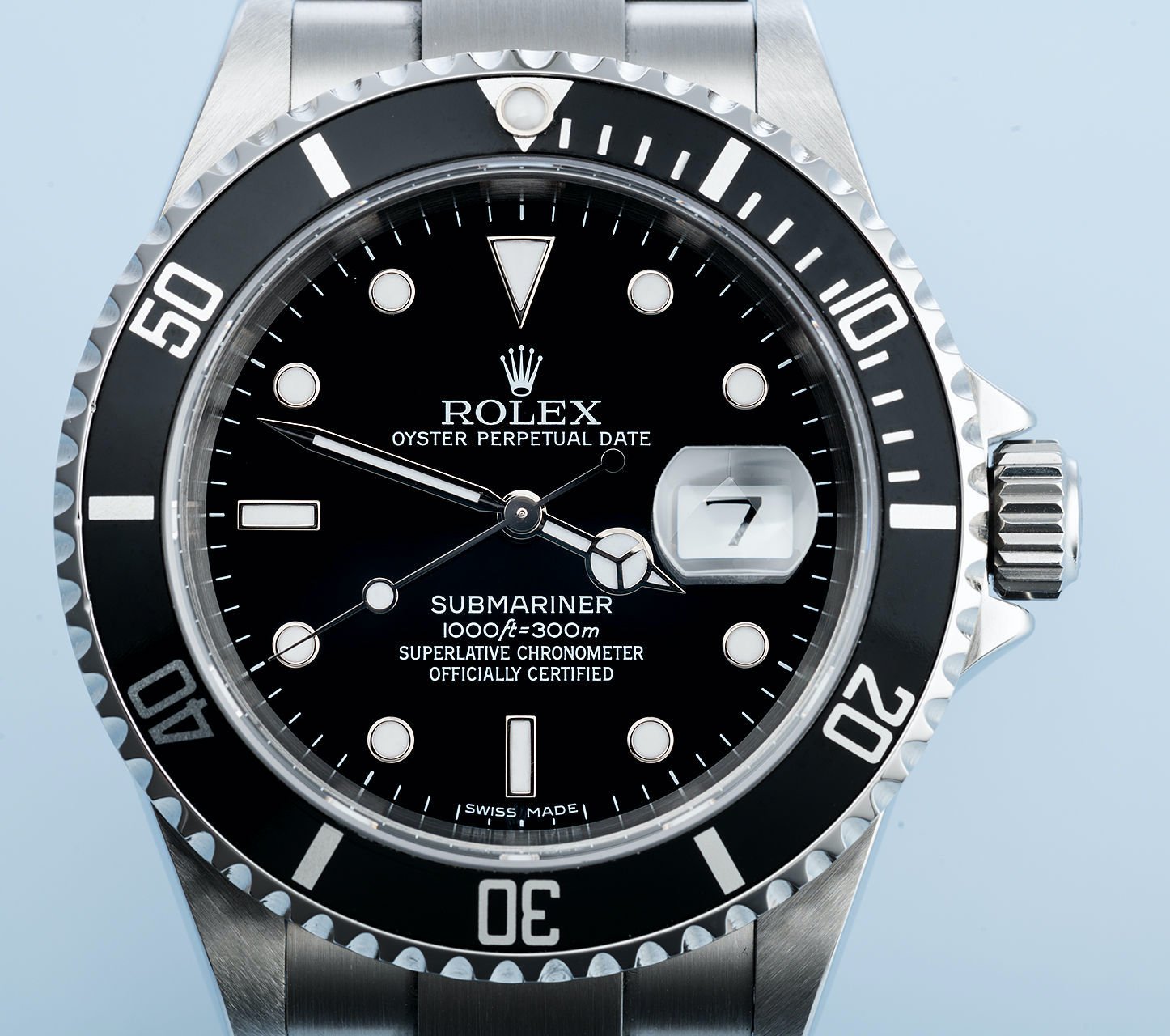
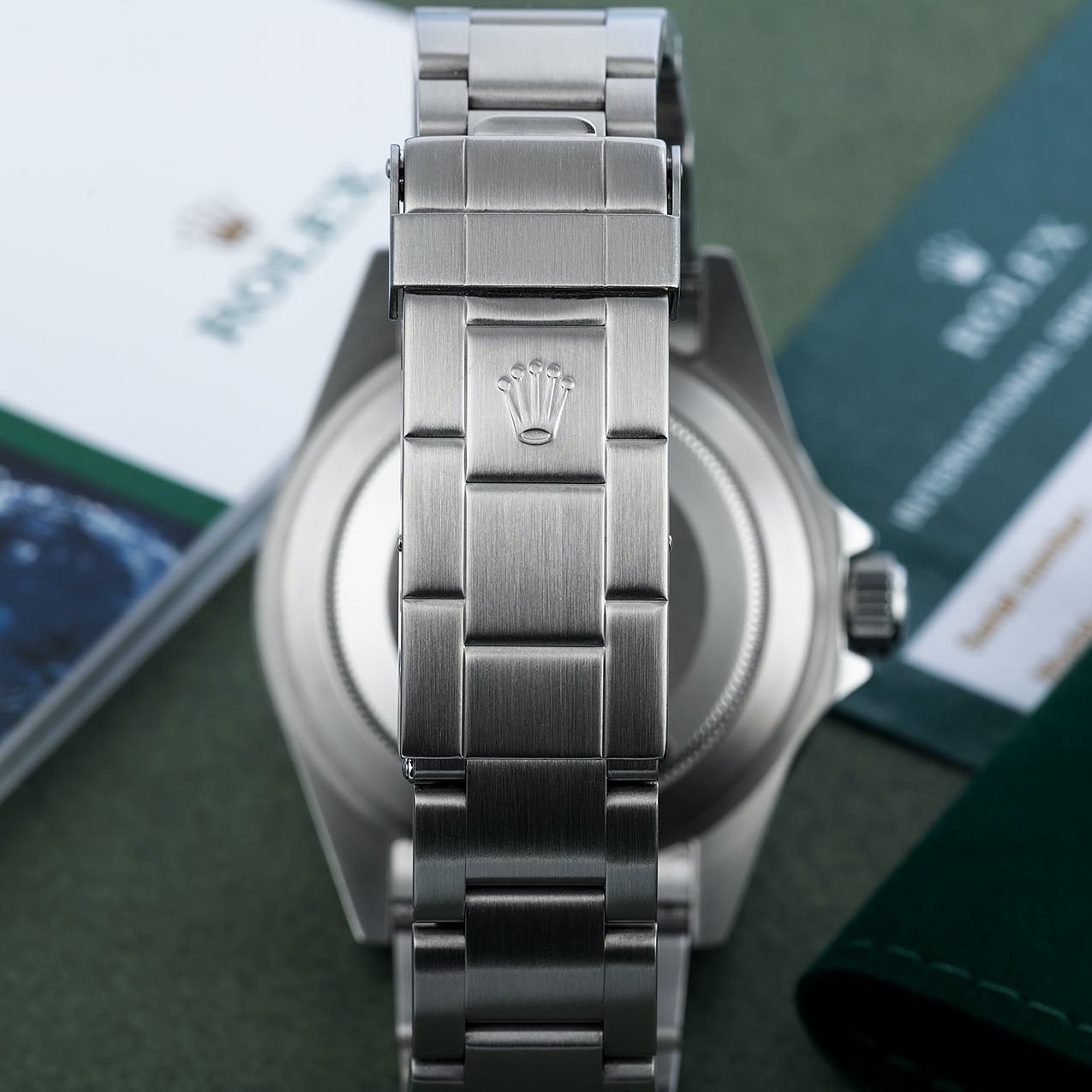
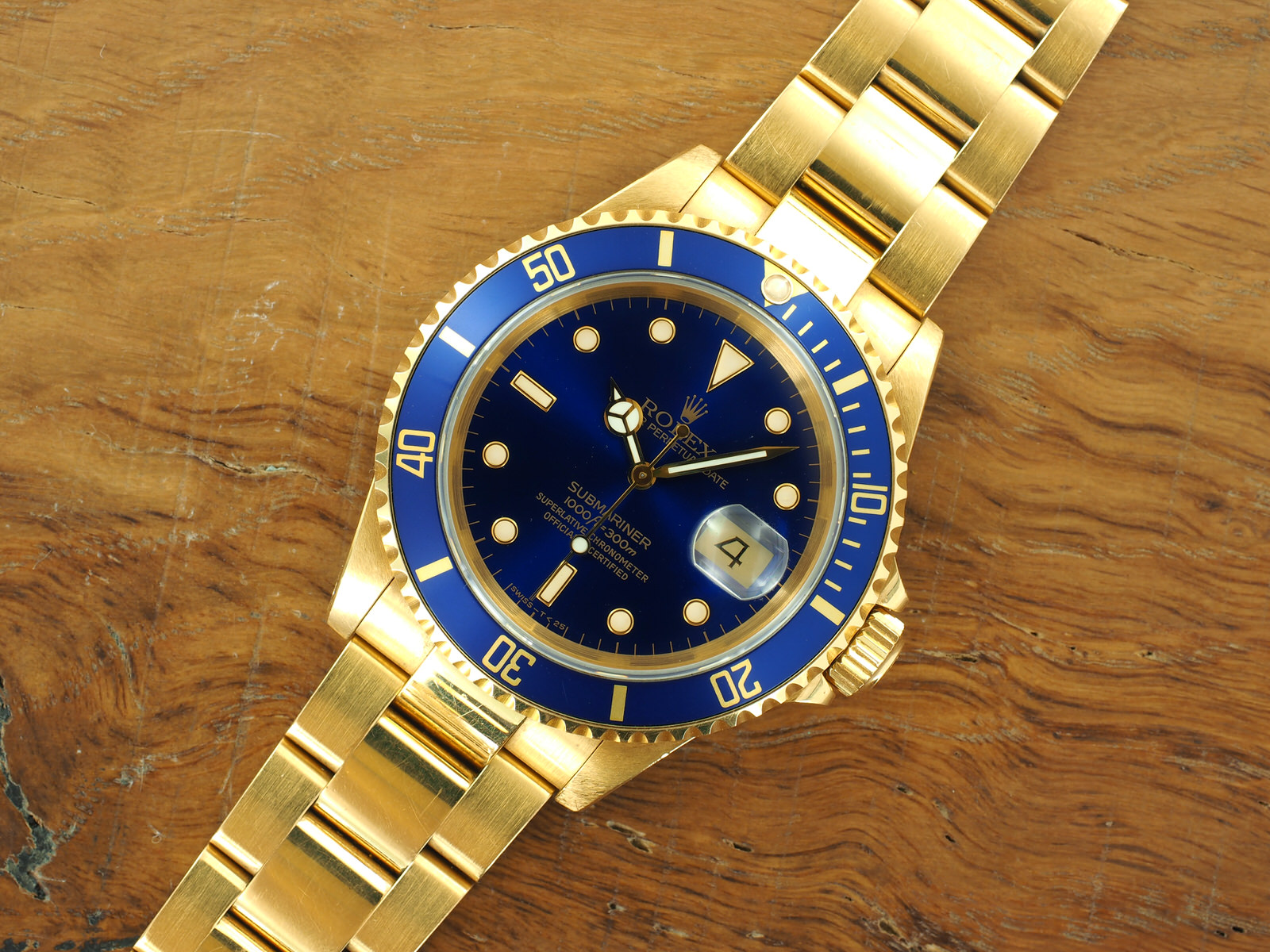
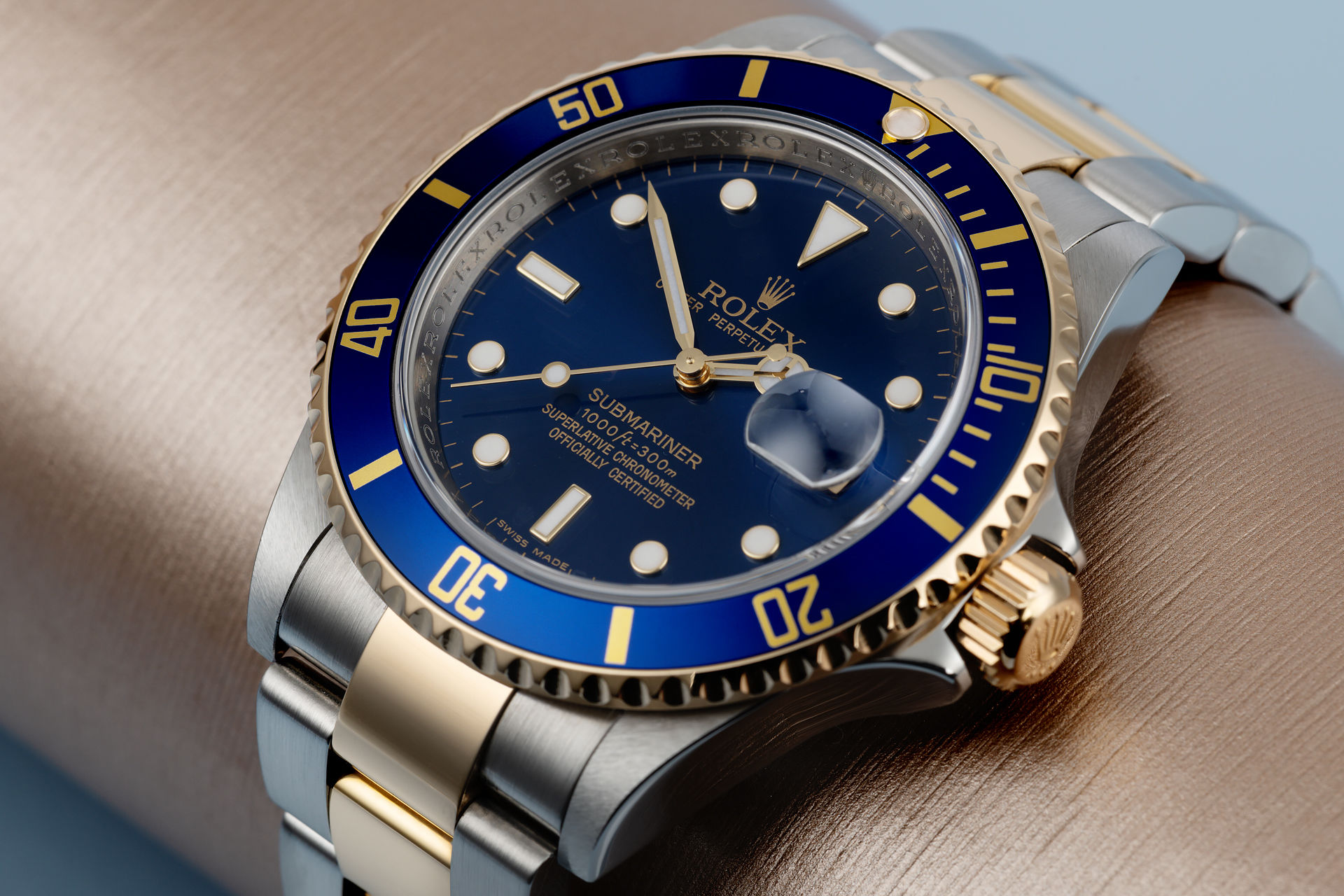
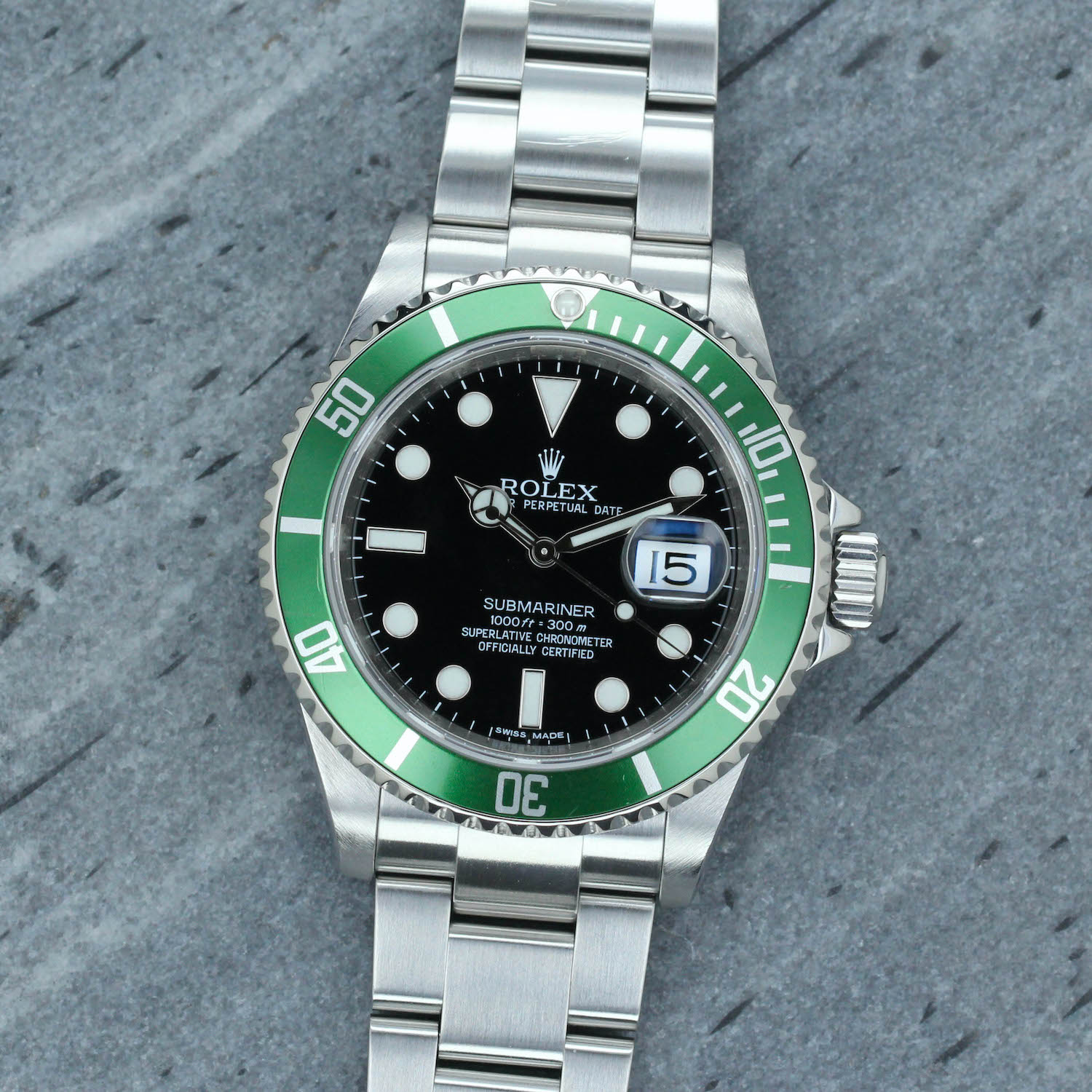
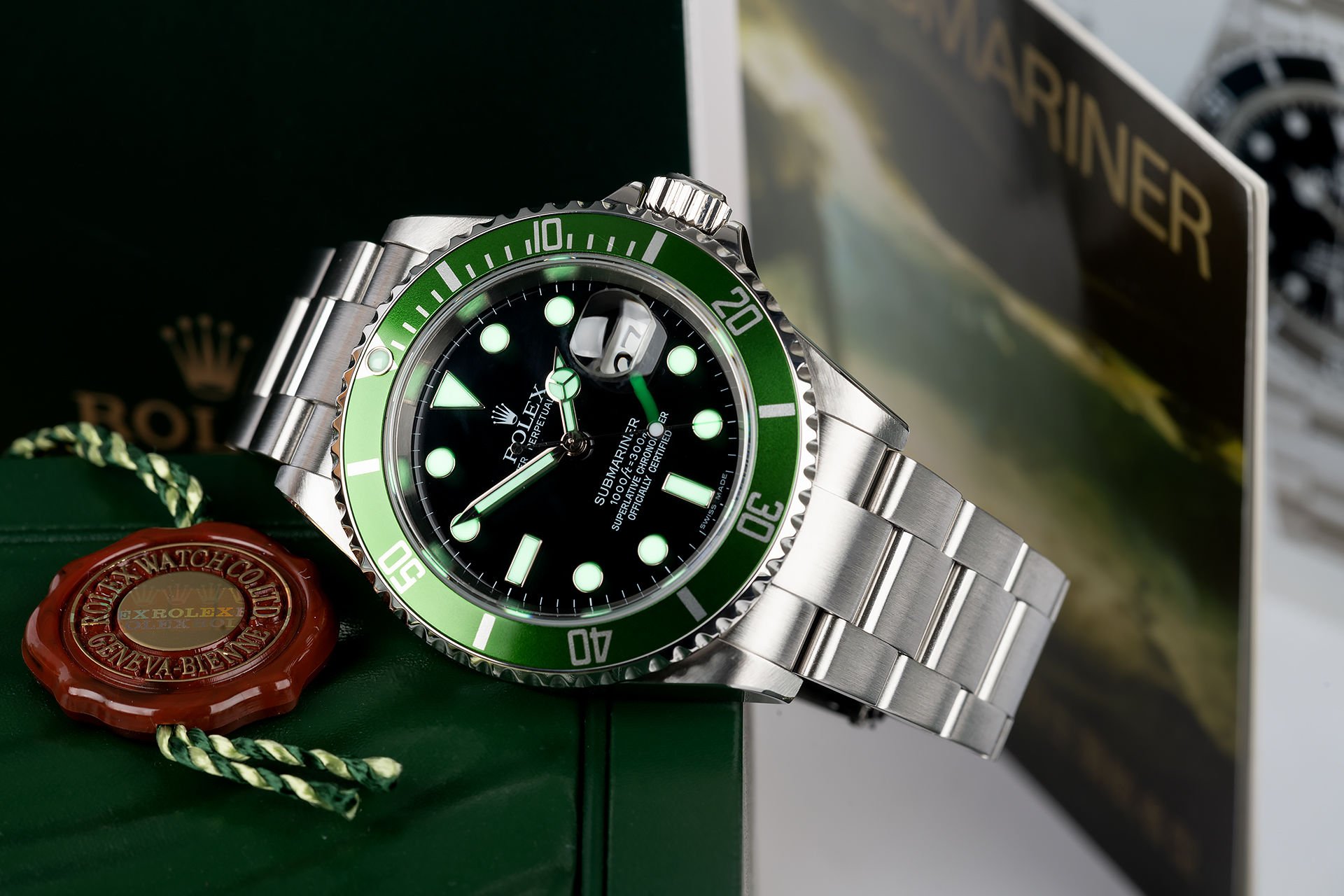
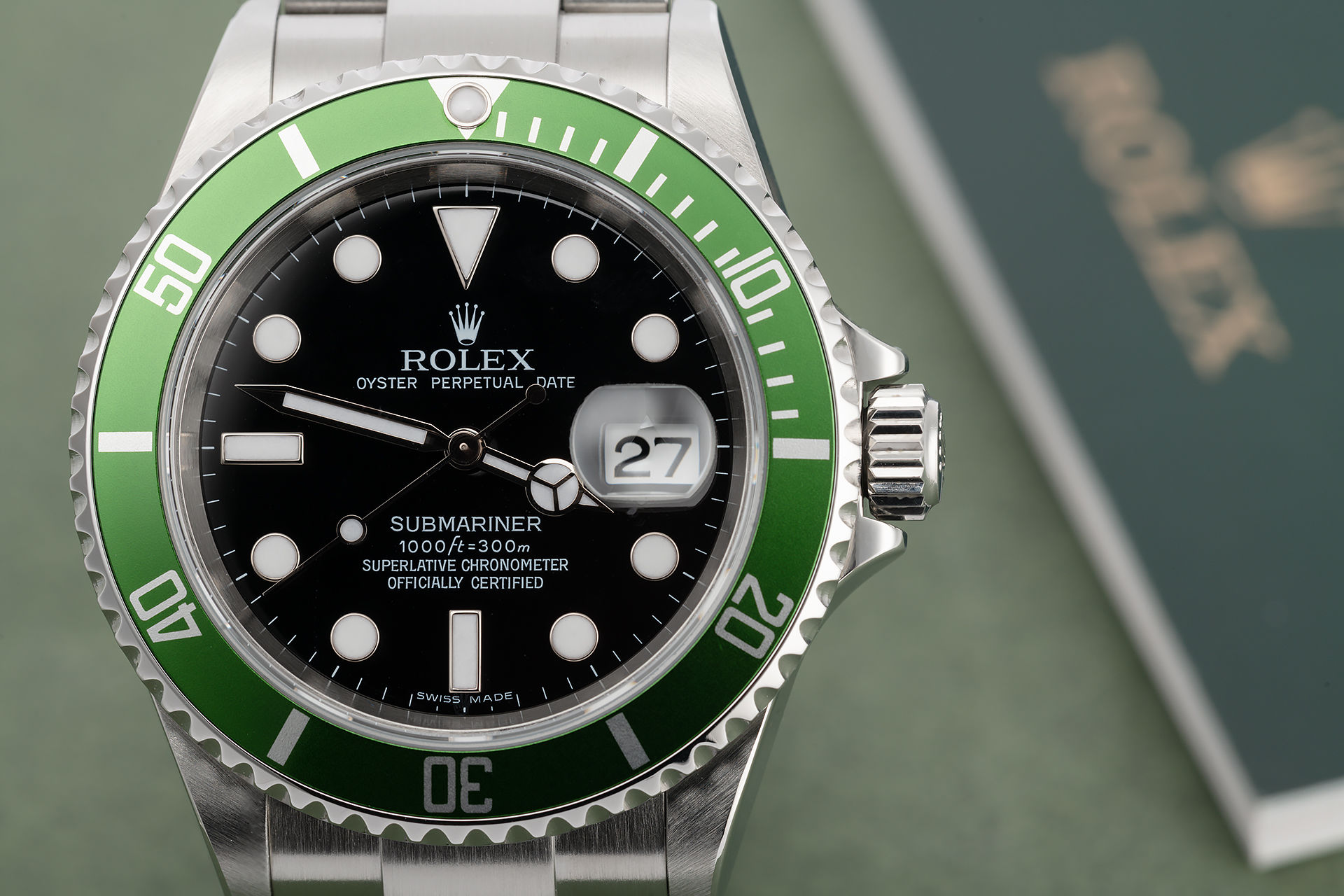
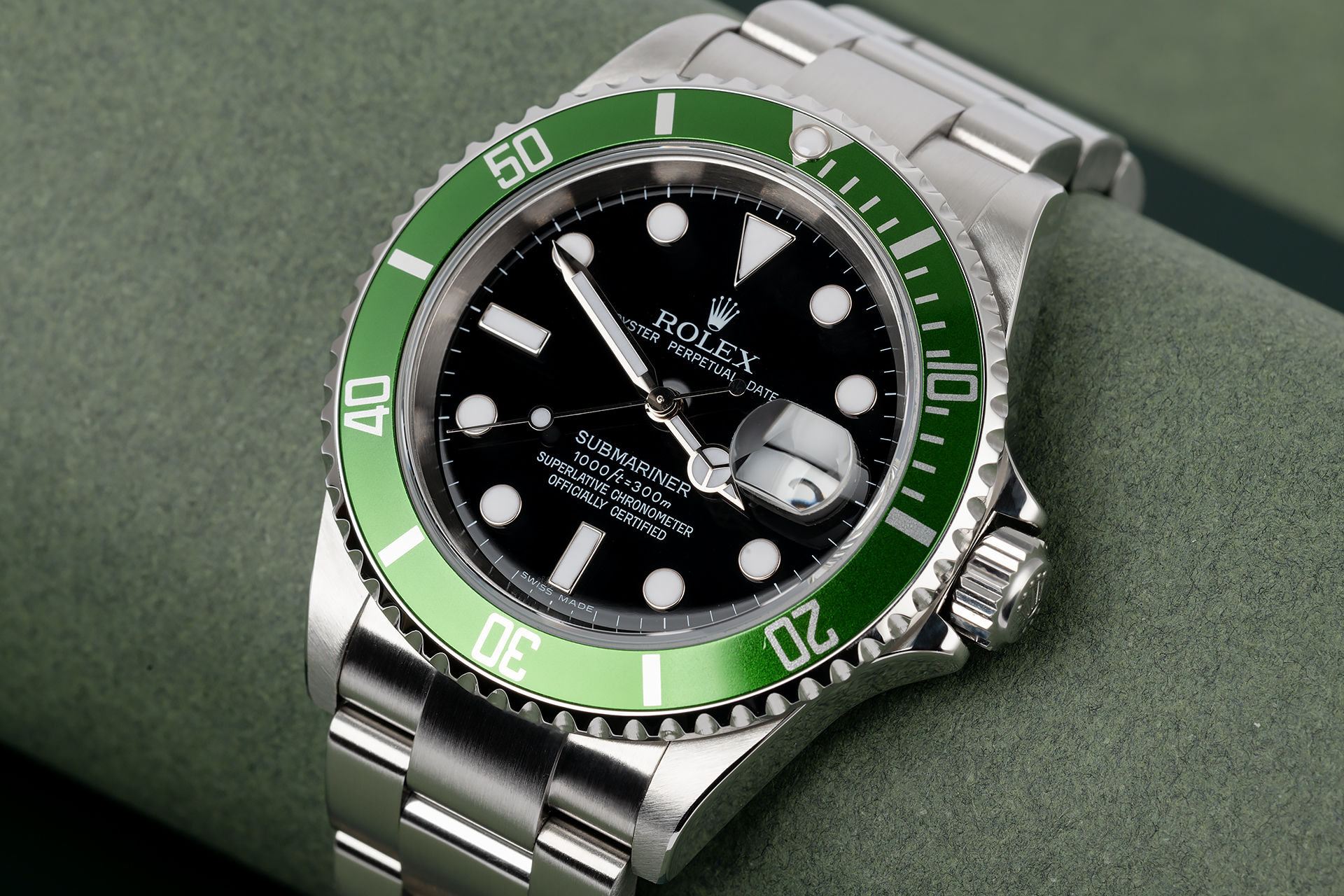
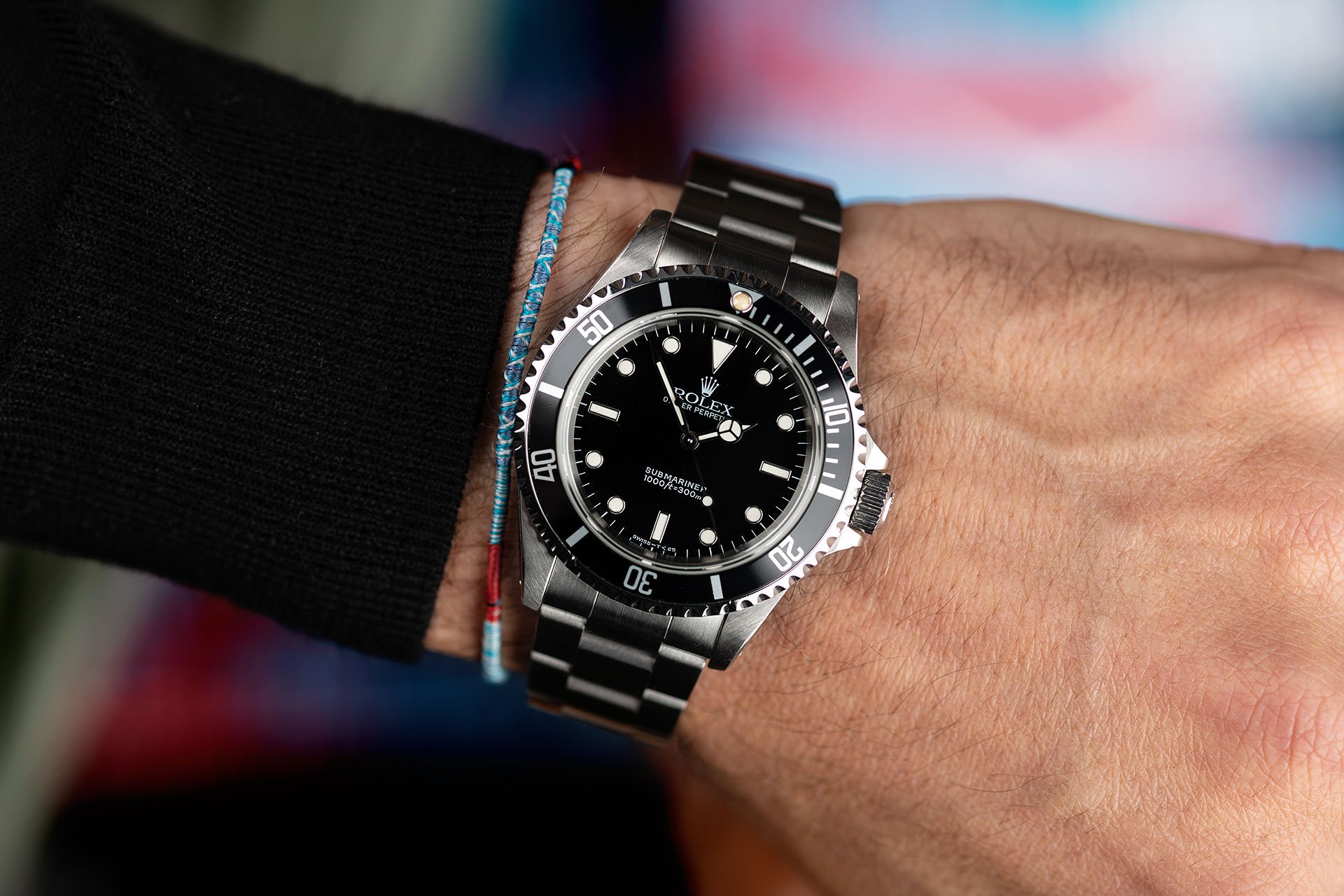
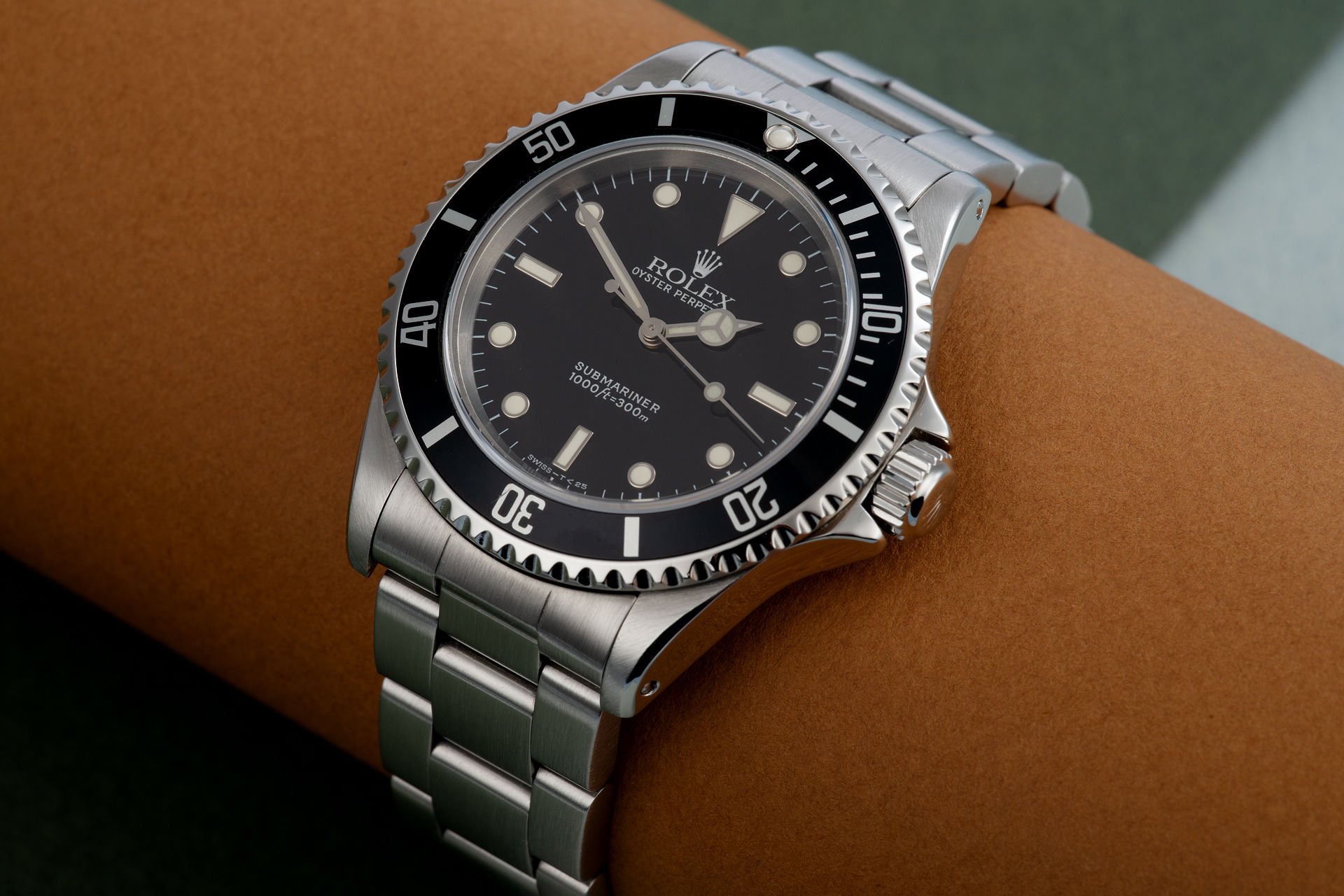

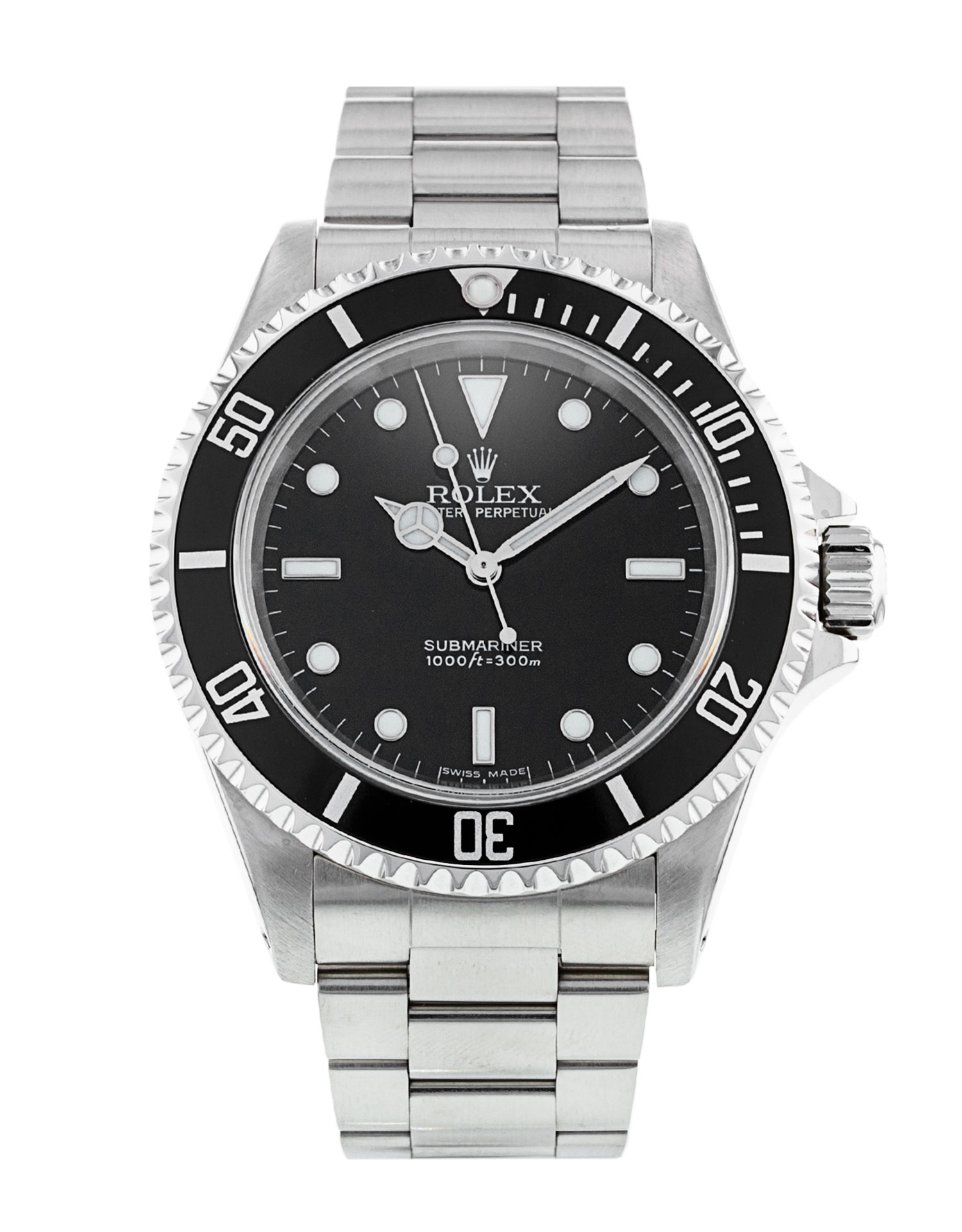
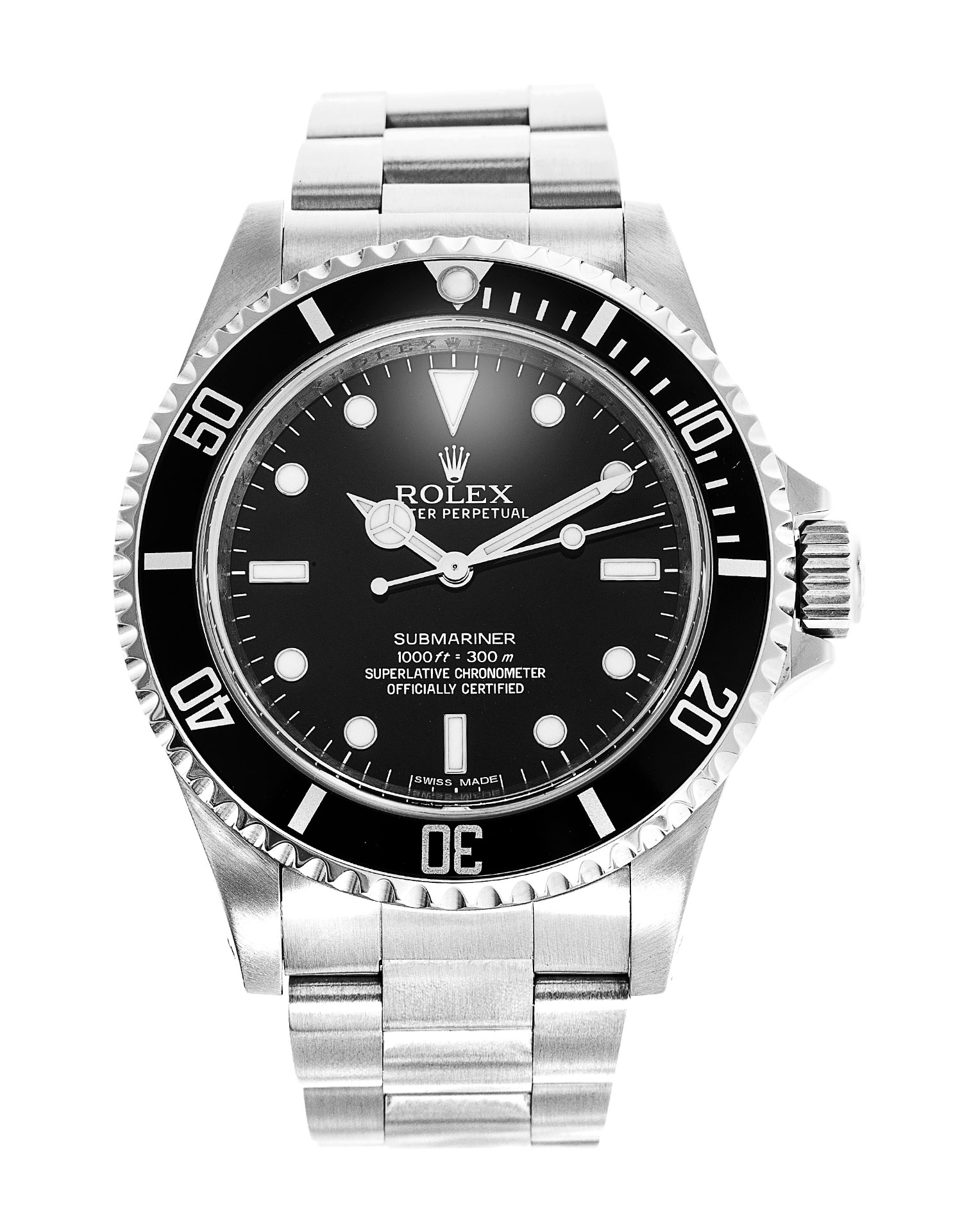



5 responses
“this upgraded version of the Ref. 16800 incorporated a ratcheted, unidirectional rotating bezel for the first time on any Submariner model. It’s hard to believe, but all the way up until 1981, the bezels on this famous dive watch could be turned in either direction.”
That’s because one of the first 2 real dive watches, the Blancpain 50 Fathoms, had this feature patented because it was created before the Submariner was even conceived of. When it and the Zodiac Seawolf were introduced at the Basil 1953, Rolex was left scrambling to come up with a response for the 1954 — which was the Submariner. As always, Rolex was follow the leader, then used hype and advertising to cover it up. by 1981 the patent had expired and Rolex realized they could use Blancpain’s invention.
Hi. Great article. Was hoping to read your view on the Submariner 168000 Triple Zero. Thx.
Interesting article. Amazing how much difference the colour makes. The black and steel always looks good , the green is interesting and the gold is as classy as an Invicta.
Same here. I own this model and wear it almost every day. My understanding is that the 168000 was interim model as Rolex transitioned to a better steel and only produced this model for 6-8 months.
Aren’t the early 16610 serials which contain parts from the earlier model 16800 and 168000 transitional as well?They use the tritium dial as well as the date wheel from the earlier models, and also the earlier bracelet.